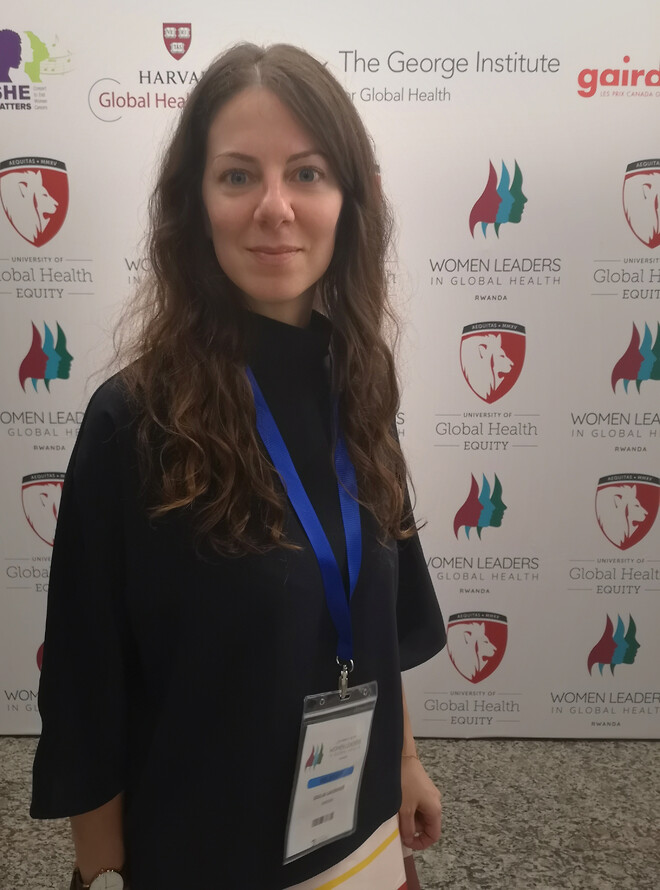Giulia Gaudenzi: ”Key lessons from global health research”
Diagnostics has been neglected in the global health agenda for years, but as the Covid-19 pandemic has made clear, is the pillar of global outbreak control and delivery of quality healthcare. Mark Kessel, former president of the Foundation for Innovative New Diagnostics (FIND), a global health non-profit based in Switzerland, wrote in 2014 in Nature Biotechnology that “in the absence of a concerted effort to fund diagnostics, the terror infectious diseases can inflict upon the world will not be contained ”. That was not an isolated prediction, but voiced the collective concerns of many of those who have seen diagnostic research underfunded and often de-prioritized.
The COVID 19 pandemic has taught everyone, that as much as medicines and vaccines, diagnostics matters, and access to it should be a human right. Recent global efforts in COVID-19 diagnostic research have been incredible. In just a few weeks we have seen hundreds of tests, prototypes and on-going trials. As predicted, the science is not the trickiest part of it. So why is the diagnostic conversation and efforts initiated only once the outbreaks strike?
The current development is resonant of the West African Ebola epidemic in 2014, but much more global in nature. During the Ebola outbreak diagnostics tests were needed for multiple applications, such as triage, diagnosis, confirmation, and cause of death. While some of the tests developed were limited to a certain application, others were broader in scope and able to serve multiple applications. In fact, when a test was designed for high clinical performance (e.g. to look for cases in a site without known current infections), it also served in situations when lower clinical performance was still useful (e.g. site of an epidemic). Unfortunately, several of these Ebola diagnostic tests had poor clinical performance and turned out to be of little use in the post-epidemic world.
What are the barriers contributing to poor impact of the technologies produced for the global health demand? First and foremost, technological research for diagnostics is often conducted in high-income countries, with poor understanding of the context in which the technology will be used, i.e. countries’ health systems and culture. Rarely are end-users involved in the early planning stages, or even in the conversation at all. As a result, we see lots of prototypes failing at the commercialization stage.
Second, the “product-centric” view of diagnostics is a problematic barrier to high impact use. This is often the case when novel pointof-care devices are developed. The product itself is of little use, if not developed with a broader contextin mind. In order to know if the technology will have a positive impact on the patient’s life, it would be more relevant to ask the question “how can we successfully complete the cycle from “testing to treatment” instead of “what can thistechnology do?”
Third, thinking of point-of-care diagnostics and central laboratories in dualistic terms is damaging. We should think of them as interlinked. Research shows that when investment is done in strengthening health systems by advancing in central quality-accredited laboratory facilities and in training highly competent medical laboratory scientists, the demand for point-ofcare testing increases. Point-of-care testing should be seen as a gap-filler for better patient empowerment and to deliver quality primary health care and not for replacing the function of a central laboratory.
What have we learned from years of underfunded global health diagnostics research? Diseases rarely disappear. In the post Covid-19 pandemic, the world will still face major challenges, such as Antimicrobial resistance, TB, Pneumonia, Malaria and HIV, and the need for reliable and efficient diagnostics of the highest quality will still be there. These needs are global and so the effort must be global. As scientists in high income settings, it is our responsibility to join efforts with our colleagues from lower resource settings in order to close the gap in access to diagnostics so as to improve health and save lives everywhere. Often the best solutions are made by people who fully understand the context in which the solutions will be applied. As the global north will come out strained from the Covid-19 crisis, we should see this as an opportunity to learn from our colleagues in the global south for how to rebuild resilient health systems
Covid-19 has shown all of us how critical global public health is, but more importantly the value on which it is based; that health equity is a human right. Nobody should get sick from preventable diseases or die from preventable deaths, because of a lack of access to reliable diagnostics. If diagnostic solutions are available then they should be made available to everyone, not only to the privileged few. If solutions are still missing, then we should make sure adequate funding is available for better diagnostic
research. After this crisis, I hope no one will need to make the case for why it is important to invest in global health.
Artikeln är en del av vårt tema om News in English.
